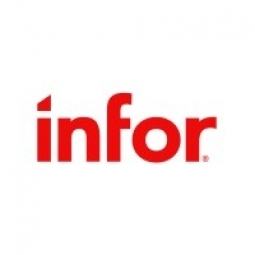Customer Company Size
Large Corporate
Region
- America
Country
- United States
Product
- Infor Birst®
- Infor CloudSuite™ Automotive
- Infor LN
- Infor d/EPM
- Infor CloudSuite Workforce Management (WFM)
Tech Stack
- Business Intelligence
- Enterprise Resource Planning
- Cloud Computing
- Data Analytics
- Mobile Access
Implementation Scale
- Enterprise-wide Deployment
Impact Metrics
- Cost Savings
- Productivity Improvements
Technology Category
- Analytics & Modeling - Real Time Analytics
- Functional Applications - Enterprise Resource Planning Systems (ERP)
- Platform as a Service (PaaS) - Data Management Platforms
Applicable Functions
- Business Operation
- Discrete Manufacturing
- Sales & Marketing
Use Cases
- Inventory Management
- Predictive Maintenance
- Real-Time Location System (RTLS)
Services
- Cloud Planning, Design & Implementation Services
- Data Science Services
- System Integration
About The Customer
Miller Industries, Inc. (“Miller Industries”) is the world leader in towing and recovery equipment. Founded in 1990, this Tennessee-based company provides innovative, high-quality towing and recovery equipment worldwide. Exporting to countries around the world, Miller Industries operates from a total of four manufacturing facilities in the United States, one in the United Kingdom, and one in France. Each manufacturing plant specializes in certain products or brands integrating back-end products with equipment-specific chassis. Miller Industries markets products under the brands: Century®, Holmes®, Chevron®, Vulcan®, Boniface®, and Jige®. As an industry leader, Miller Industries produces a comprehensive line of quality equipment, including carriers up to 30 feet in length, with deck capabilities of up to 40,000 lb. and towing recovery units with boom capacities of 100 tons. Miller Industries products are sold and serviced through the largest distribution network in the industry.
The Challenge
Before deploying networked business intelligence (BI) from Infor® Birst, the information needed to manage finance, sales, and manufacturing processes was locked in multiple systems and only accessible to technical experts. Decentralized analytics teams pulled data directly from source systems, generating islands of information that could not be shared. Further, executive-level reporting was manual, and it was very time-consuming to not only access information but also to reconcile inconsistent metrics. These manual processes greatly increased the time it took Miller Industries to make decisions and were a huge drain on the productivity of the management teams.
The Solution
An Infor customer since 1998, Miller Industries is currently using Infor LN enterprise resource planning (ERP) system and is moving to Infor’s CloudSuite™ Automotive and other cloud- based applications (planned Q1 2020). The company decided to implement Infor Birst as its enterprise-wide BI and analytics standard after learning about this next-generation cloud BI platform which integrates with a wide variety of data sources including Infor LN and is the analytics standard for all of Infor’s CloudSuites. The goal was to gain more knowledge from a single source of data, as well as mobile access to that data, and more visibility to that information so management could improve and accelerate decision-making yet still tend to day-to-day business operations. The Birst platform provides all levels of the organization the power to analyze the latest trends, understand what’s driving the business, and to make quick and informed decisions.
Operational Impact
Quantitative Benefit

Case Study missing?
Start adding your own!
Register with your work email and create a new case study profile for your business.
Related Case Studies.

Case Study
Remote Monitoring & Predictive Maintenance App for a Solar Energy System
The maintenance & tracking of various modules was an overhead for the customer due to the huge labor costs involved. Being an advanced solar solutions provider, they wanted to ensure early detection of issues and provide the best-in-class customer experience. Hence they wanted to automate the whole process.

Case Study
Predictive Maintenance for Industrial Chillers
For global leaders in the industrial chiller manufacturing, reliability of the entire production process is of the utmost importance. Chillers are refrigeration systems that produce ice water to provide cooling for a process or industrial application. One of those leaders sought a way to respond to asset performance issues, even before they occur. The intelligence to guarantee maximum reliability of cooling devices is embedded (pre-alarming). A pre-alarming phase means that the cooling device still works, but symptoms may appear, telling manufacturers that a failure is likely to occur in the near future. Chillers who are not internet connected at that moment, provide little insight in this pre-alarming phase.

Case Study
Aircraft Predictive Maintenance and Workflow Optimization
First, aircraft manufacturer have trouble monitoring the health of aircraft systems with health prognostics and deliver predictive maintenance insights. Second, aircraft manufacturer wants a solution that can provide an in-context advisory and align job assignments to match technician experience and expertise.

Case Study
Leading Tools Manufacturer Transforms Operations with IoT
Stanley Black & Decker required transparency of real-time overall equipment effectiveness and line productivity to reduce production line change over time.The goal was to to improve production to schedule, reduce actual labor costs and understanding the effects of shift changes and resource shifts from line to line.

Case Study
Integral Plant Maintenance
Mercedes-Benz and his partner GAZ chose Siemens to be its maintenance partner at a new engine plant in Yaroslavl, Russia. The new plant offers a capacity to manufacture diesel engines for the Russian market, for locally produced Sprinter Classic. In addition to engines for the local market, the Yaroslavl plant will also produce spare parts. Mercedes-Benz Russia and his partner needed a service partner in order to ensure the operation of these lines in a maintenance partnership arrangement. The challenges included coordinating the entire maintenance management operation, in particular inspections, corrective and predictive maintenance activities, and the optimizing spare parts management. Siemens developed a customized maintenance solution that includes all electronic and mechanical maintenance activities (Integral Plant Maintenance).

Case Study
Hospital Inventory Management
The hospital supply chain team is responsible for ensuring that the right medical supplies are readily available to clinicians when and where needed, and to do so in the most efficient manner possible. However, many of the systems and processes in use at the cancer center for supply chain management were not best suited to support these goals. Barcoding technology, a commonly used method for inventory management of medical supplies, is labor intensive, time consuming, does not provide real-time visibility into inventory levels and can be prone to error. Consequently, the lack of accurate and real-time visibility into inventory levels across multiple supply rooms in multiple hospital facilities creates additional inefficiency in the system causing over-ordering, hoarding, and wasted supplies. Other sources of waste and cost were also identified as candidates for improvement. Existing systems and processes did not provide adequate security for high-cost inventory within the hospital, which was another driver of cost. A lack of visibility into expiration dates for supplies resulted in supplies being wasted due to past expiry dates. Storage of supplies was also a key consideration given the location of the cancer center’s facilities in a dense urban setting, where space is always at a premium. In order to address the challenges outlined above, the hospital sought a solution that would provide real-time inventory information with high levels of accuracy, reduce the level of manual effort required and enable data driven decision making to ensure that the right supplies were readily available to clinicians in the right location at the right time.







